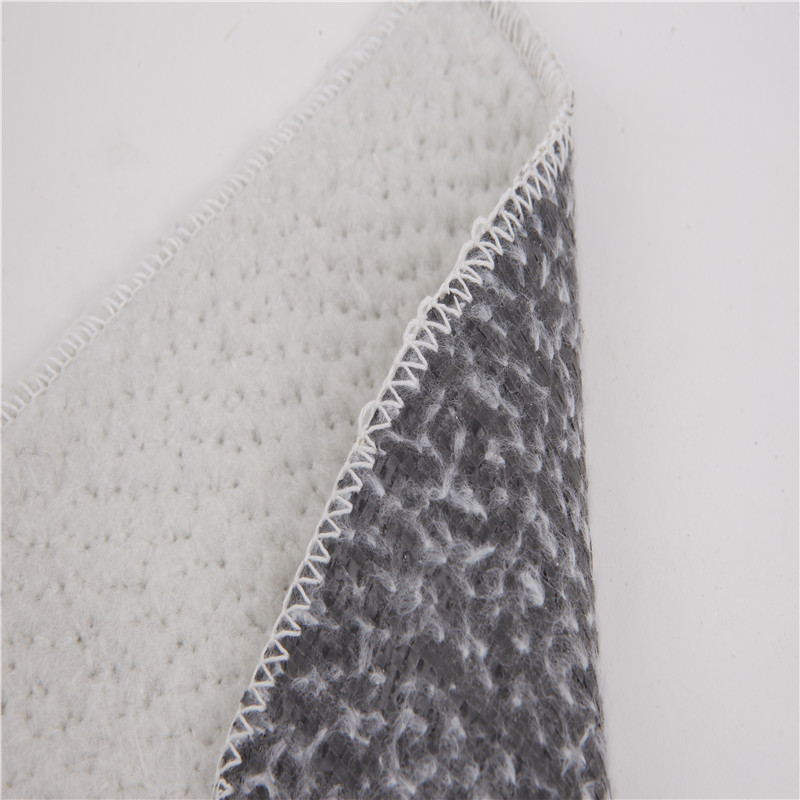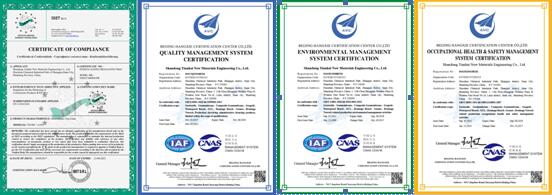Stress-locking tool chuck
2.1 TRIBOS-S type stress-locking tool chuck
(1) Working principle
The working principle of the TRIBOS-S type stress-locking tool chuck is as follows: the clamping hole of the chuck has a precisely designed special axisymmetric geometry. In the original state, the tool cannot be inserted into the clamping hole; when the tool is installed, Use a special loader to pressurize the chuck clamping section from the outside, forcing the shape of the clamping hole to become a round hole within the range of elastic deformation, and then the tool can be smoothly inserted into the clamping hole; then the loading is released. The tool (ie, the external load is removed), the tool is firmly clamped by the huge deformation restoring force of the chuck. Also, it is easy to remove the tool or change the tool from the chuck using the loader.
(2) Performance characteristics
TRIBOS-S type stress-locking tool chuck has the following excellent technical performance: extremely high clamping rotation accuracy and repeated clamping accuracy (≤3μm); extremely thin outer diameter size; stable and reliable clamping force; Fully enclosed structure, no moving parts, no wear and maintenance-free; the chuck is always in elastic deformation after clamping the tool, and has a long service life; it is quick and convenient to use the loader to change the tool; the chuck has no restrictions on the material of the clamped tool. The use of a completely symmetrical structure, suitable for high-speed cutting; can significantly improve the force state of the tool in the cutting process, effectively improve the accuracy of the cutting process and the surface quality of the workpiece.
(3) Torque that can be transmitted by the clamped tool
The torque transmitted by the TRIBOS-S type stress-locking tool chuck directly clamping the tool is shown in Table 1. The data in Table 1 is given after considering a certain safety factor based on a large amount of measured data. The tool's toolholder accuracy is h6).
2.2 TRIBOS-SVL cutter extension rod
The working principle and performance characteristics of the TRIBOS-SVL tool extension rod are the same as those of the TRIBOS-S type tool holder. Its clamping rotation accuracy and repeated clamping accuracy are ≤3μm. The standard series of TRIBOS-SVL tool extensions are available in 100mm and 150mm lengths. The cylindrical shank is available in 12mm, 20mm and 32mm diameters. The clamping aperture with the 12mm cylindrical shank is 3, 4, 5mm; the clamping aperture with the 20mm cylindrical shank is 6, 8, 10, 12mm; the clamping aperture with the 32mm cylindrical shank is 14, 16, 18, 20mm. Non-standard series of tool extensions can be used to determine the length of manufacture according to specific requirements. The torque transmitted by the TRIBOS-SVL tool extension rod is the same as that of the TRIBOS-S tool holder (see Table 1). It can be used in conjunction with a variety of tool chucks to solve interference problems and replace expensive and non-standard tools.
2.3 TRIBOS-R type stress locking tool chuck
Compared with the TRIBOS-S, the TRIBOS-R type of stress-locking tool chuck has a larger outer diameter of the clamping section and a special damping cavity structure. The cavity is filled with damping. The vibration-reducing thermosetting plastic greatly improves the damping performance, rigidity and clamping force of the tool chuck, and can be used not only for finishing but also for heavy cutting.
Like the TRIBOS-S, the TRIBOS-R tool holder also has excellent technical performance: clamping rotation accuracy and repeated clamping accuracy ≤ 3μm; stable and reliable clamping force; high torque transmission; fully symmetrical Structure, the gripper has no moving parts, no wear, maintenance-free, durable, suitable for high-speed cutting; quick and convenient clamping and changing of tools with loader; good rigidity, excellent damping and vibration damping performance, Improve cutting precision and improve workpiece surface quality.
The TRIBOS-R tool chuck works like the TRIBOS-S. The torque transmitted by the TRIBOS-R tool chuck after directly clamping the tool is shown in Table 2. (The data in Table 2 is given after considering a certain safety factor based on a large amount of measured data; the accuracy of the tool bar of the tool to be tested is h6).
Dynamic balance characteristics of the stress-locking tool chuck The dynamic balance of the stress-locking tool chuck is based on the dynamic balance indicators recommended by the German Industrial Application Research Organization AIF:
SK40, SK50-G6.3/15000r/min; BT40, BT50-G6.3/15000r/min; HSK-A 32-63-G6.3/15000r/min; HSK-A 80-100-G6.3/ 12000r/min; HSK-C 32-63-G6.3/15000r/min; HSK-C 80-100-G6.3/12000r/min; HSK-E 32-63-G6.3/30000r/min.
If there is a higher speed requirement, the finer dynamic balance can make the TRIBOS-S tool holder and TRIBOS-SVL tool extension rods work at 85000r/min. The TRIBOS-R tool holder is suitable for 55000r. /min working speed. In tests conducted by the Darmstadt Production Technology and Cutting Machine Tool Research Institute, the stress-locking tool chucks of the company have maintained good mechanical properties at 200000 r/min.
Interface type and clamping diameter of stress-locking tool chuck
The interface of the stress-locking tool chuck refers to the part of the tool chuck that is connected to the machine tool spindle. In order to be used on a variety of machine tools, the interface of the tool chuck has various types, commonly used: in line with German industrial standards. The SK type of DIN 69871 conforms to the BT type of the Japanese industrial standard JIS B 6339 and conforms to the HSK type of the German industrial standard DIN 69893. The TRIBOS-S tool holder has a minimum diameter of 3 mm and a maximum diameter of 25 mm. The TRIBOS-R tool holder has a minimum diameter of 6 mm and a maximum diameter of 20 mm. The stress-locking tool chuck can also be used with a reducer sleeve to allow a tool chuck to hold tools of various diameters. The outer diameter of the reducer sleeve is available in 12mm and 20mm sizes. Using a diameter reduction sleeve of 12 mm, it is possible to hold tools with diameters of 3, 4, 5, 6, and 8 mm; using a reduction sleeve with an outer diameter of 20 mm, it is possible to clamp diameters of 6, 8, 10, 12, and 14 , 16mm tool.
TRIBOS loading loader
When loading and unloading the tool with the TRIBOS SVP-2 tool loader, insert one end of the chuck or extension rod into the force sleeve in the specified direction, and then insert it into the pressure hole of the loader together with the transition sleeve to close the pressure relief valve. By pressing the pressure handle to raise the reading of the pressure gauge to the specified value, the tool can be easily inserted into the clamping hole. When the pressure relief valve is released, the tool is clamped. Unloading the knife also follows the same steps. The tooling or tool change process can be completed in 30 seconds. The tool loader can be loaded and unloaded for carbide tools and high speed steel tools.
Requirements for the use of stress-locking tool holders
The requirements for the use of the stress-locking tool chuck are: when the outer diameter of the clamped tool is ≤ 8 mm, the accuracy level of the tool bar is required to be h6; when the outer diameter of the tool is > 8 mm, the accuracy level of the tool bar can be relaxed to h7. The axial adjustment of the tool in the clamping hole is 10 mm. When loading and unloading the tool with the TRIBOS tool loader, the oil pressure in the loader is read by the pressure gauge. The value of the oil pressure must be less than the maximum allowable pressure value marked on each tool chuck. Otherwise, the tool chuck will be caused. Plastic deformation and damage.
Http://news.chinawj.com.cn Editor: (Hardware Business Network Information Center) http://news.chinawj.com.cn
Sodium bentonite waterproof blanket- GCL
Part one: Description of
GCL waterproof blanket
Geosynthetic clay liners (GCLs) are high performance needle punched environmental reinforced composites which combine two durable Geotextile outer layers with a uniform core of natural sodium bentonite clay to form a hydraulic barrier. Fibers from the non-Woven Geotextile are needle punched through the layer of bentonite and incorporated into the other geotextile (either a woven or non-woven).when hydrated under a confining load, the bentonite swells to form a low permeability clay layer with the equivalent hydraulic protection of several feet of compacted clay.

Part Two: Technical of GCL waterproof blanket

Part Three: The Application of GCL
This Bentonite production line is usded to bond 3layers of top geotextile,
middle bentonite sand, and down plastic woven film.
The water proof bentonite pad is mainly used in penetration-proof,airproof
&separation in rubbish burying square,man-made
lake,channel,pool,basement,subway,etc.
The production line processing of finished products with high peel strength,
strong pulling hardness, low permeability.

Part Four: Certificate

Part Five: others
Packaging & Shipping
The Packaging of Hdpe Geomembrane
woven bag or as customers' requests
Shipping:
7 days after receive the advance payment
Part Six: Contact

Geosynthetic Clay Liner(Gcl),Sodium Bentonite Geosynthetic Clay Liner,Bentonite Geosynthetic Clay Liner,Composite Geosynthetic Clay Liner
Shandong Tianhai New Materials Engineering Co., Ltd , https://www.chinatinhy.com